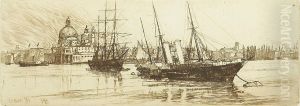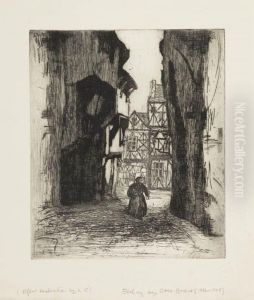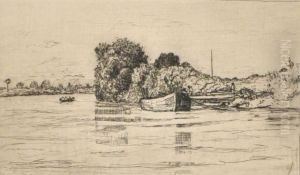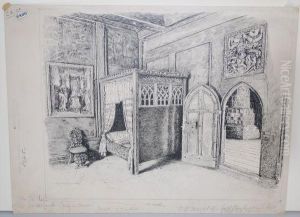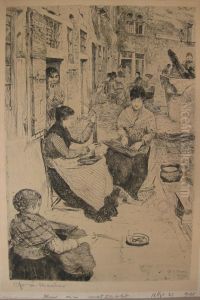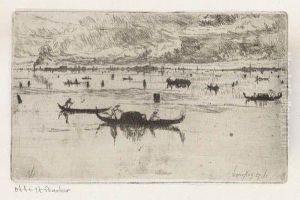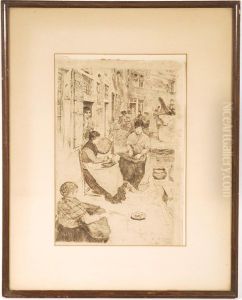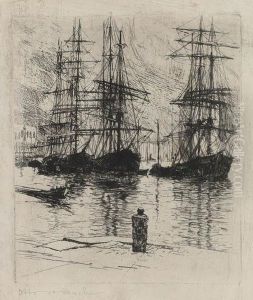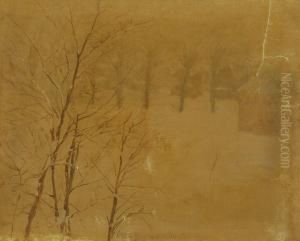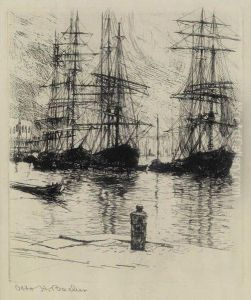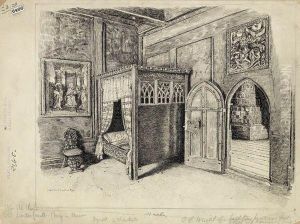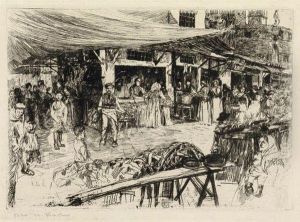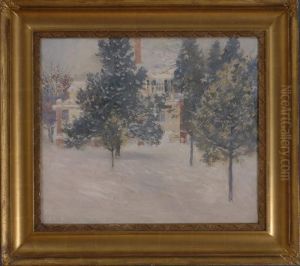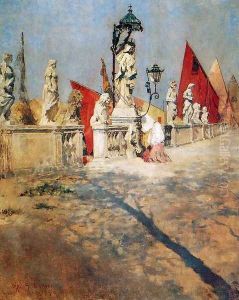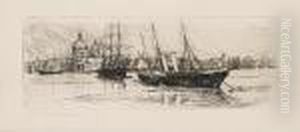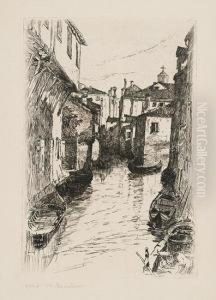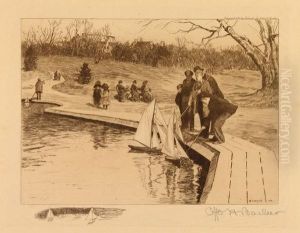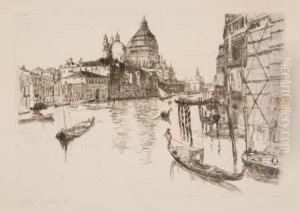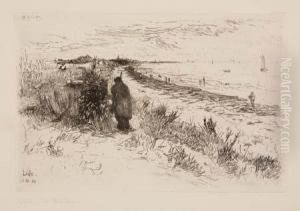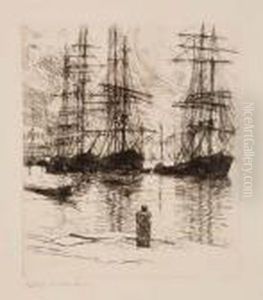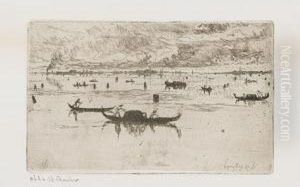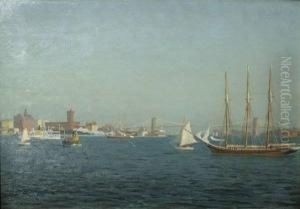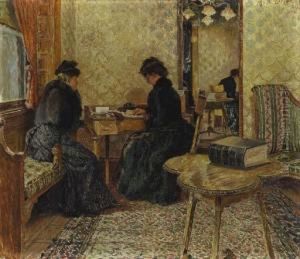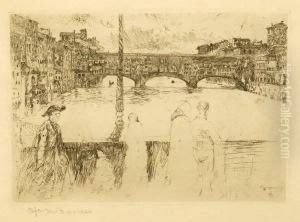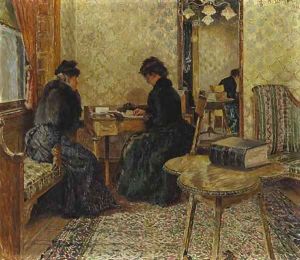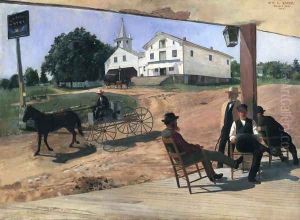Otto (Henry) Bacher Paintings
Otto Henry Bacher was an American artist known for his work as a painter, etcher, and illustrator. Born on May 31, 1856, in Cleveland, Ohio, he showed an early interest in art and pursued his passion through self-directed study and apprenticeships with local artists. Bacher is particularly remembered for his contributions to the medium of etching, which experienced a resurgence in the late 19th century.
Bacher began his formal art education at the Royal Academy in Munich, Germany, in 1878, where he was heavily influenced by the works of the old masters, as well as by his contemporaries in the European art scene. During his time in Europe, he became acquainted with notable American artist Frank Duveneck, who introduced him to a circle of expatriate American artists, including James McNeill Whistler. Bacher became closely associated with Whistler, accompanying him to Venice and assisting with the production of a series of etchings.
His time in Venice was particularly formative. There, Bacher developed his own etching style, reflecting the intricate interplay of light and shadow, as well as the architectural and canal scenes for which Venice is renowned. His work from this period contributed to the etching revival that was occurring in America and Europe, and Bacher's etchings were well received by critics and collectors alike.
Upon returning to the United States, Bacher settled in New York and became a member of the New York Etching Club, further establishing his reputation as a skilled etcher. He also became involved in illustration, contributing to various publications and producing works that showcased his keen observation and ability to capture the essence of his subjects.
Throughout his career, Bacher remained dedicated to the art of etching, but he also produced a significant body of work as a painter, with a style characterized by realism and attention to detail. He was adept at both landscapes and portraits, and his paintings often depicted scenes of American life and nature.
Otto Henry Bacher's contributions to art extended beyond his own creations. He was committed to fostering a community among artists and to the education of future generations. He was one of the founding members of the Cleveland School of Art, which played a significant role in the development of the arts in Ohio.
Bacher's life was cut short by illness, and he passed away on August 16, 1909, in Bronxville, New York. Despite his relatively brief career, his work continues to be appreciated for its technical skill and its role in the history of American art, particularly in the fields of etching and illustration.
